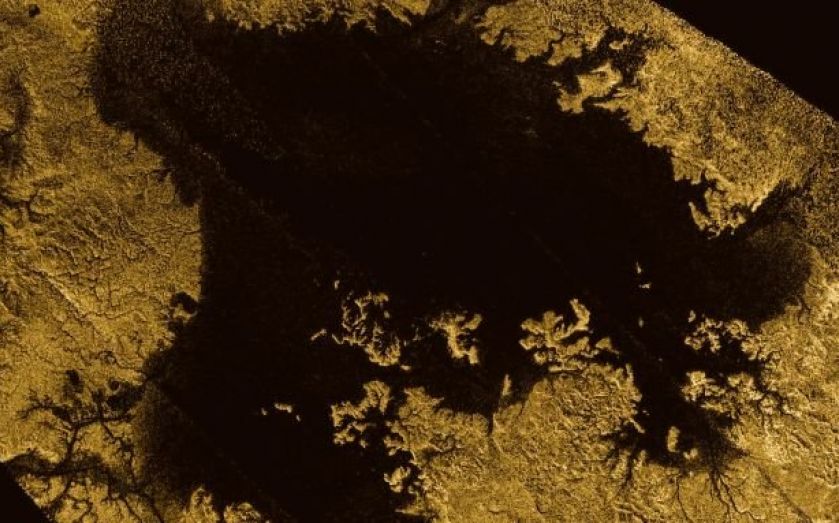Titan’s magic island is not an island. So what is it?

While flying by Titan, Saturn's largest moon, Nasa's Cassani spacecraft spotted a strange dark splodge on its surface, which has since been described as its “mystery island”.
But that was last July, and three fly-bys since then have failed to spot this island again, leaving scientists baffled as to what the strange sighting could have been caused by.
One of the most extraordinary bodies in our solar system, Titan is the only place beyond Earth known to have rain falling from the skies.
By rivers and lakes of ethane and methane you will find high dunes of hydrocarbons, and the seasons come and go just like on Earth. The “magic island” was sighted in Ligeria Mare, one of the methane-ethane oceans found at Titan's north pole.
"'Magic island' is a colloquial term that we use within the team to refer to this,” co-author of the study Jason Hofgartner told the BBC. “But we don't actually think it's an island."
So what is it? In light of the disappearance, scientists have proposed a variety of possible explanations. "We have four different hypotheses that are all equally preferred. In no particular order they are: waves, rising bubbles, floating solids and suspended solids," said Hofgartner.
The possibilities
1. Waves: Titan has a 30-year seasonal calendar, and it is currently halfway through its equivalent of spring. As it approaches summer, increasing amounts of the Sun's energy will be deposited in the northern hemisphere, making the area more turbulent. With stronger winds blowing, waves will become bigger, and it is perfectly feasible that it is these waves that shadowed over part of the north pole during the fly-by.
2. Bubbles: it is thought that there could be a subsea volcanic vent under Titan's oceanic north, causing bubbles to appear at the surface. This is considered to be a likely option because methane can only exist for a short time in the atmosphere before being destroyed by UV rays, and there is a large amount of methane in Titan's atmosphere, so it must be coming from somewhere.
3. Floating solids: an earthly iceberg would sink in an ocean of ethane and methane because of its greater density, but scientists think there is a possibility that part of the ocean solidified from Titan's own ocean, creating a frozen lump of methane and ethane.
A compelling argument for this is that conditions on Titan have previously indicated methane-ethane ice would float in the summer and sink in the winter, which fits in with the fact that Titan has been approaching summer for the past two years.
4. Suspended solids: an alternative is that, rather than being caused by something floating on the surface, the dark spot was the result of something suspended just below the ocean's surface, in the same way that silt is suspended below the surface of our own rivers. Scientists suggest that the suspended matter could be formed from various organic compounds found on the moon's surface.
At the moment these ideas are just speculation, and researchers say more observations will be required if they are to find out the cause of Titan's mystery island.
"The observations with Cassini's radar are close to the limit of sensitivity so hard to interpret. But they do seem to be the first sign of something going on in the sea. Is it floating solids or erupting gas bubbles from below or wave action? We just don't know. The one thing we can say with certainty is that we just have to go back to Titan – but this time with a sea floater so that we can see close up just what is happening in the seas of this incredible place," professor John Zarnecki from the Open University told the Guardian.